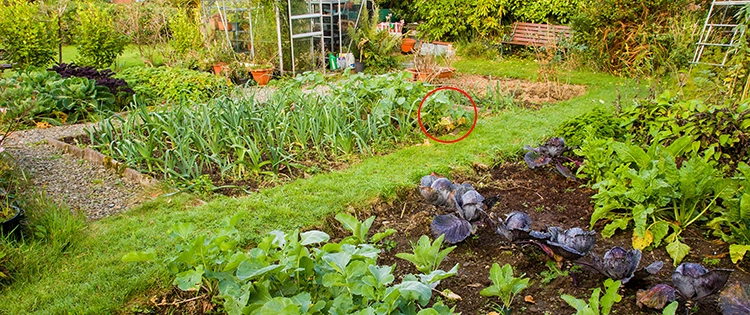Legumes have sustained humanity and our livestock for thousands of years and throughout history long forgotten. Let’s talk about the ultimate survival crop you need on your property.
Though the bean does not hold all the amino acids necessary to sustain life or fully function, it is one of the most hard-hitting pieces of nutrition available today. Better yet, it’s easy to grow and there are dozens of types of them.
While some are better than others, most are exceptionally nutritious for you in one way or another. Curious? Let’s take a deeper look at the ever-present and ever-powerful bean.
The Ultimate Survival Crop: Which Ones?
Don’t toss your green beans or soybeans just yet, but get ready to learn why some beans truly earn the title of the ultimate survival crop while others don’t.
Take green beans, for example—they’re great for fiber and have some nutrients, but their calorie, protein, and vitamin content are pretty low. Soybeans are better, thanks to their high protein-to-weight ratio, but they still don’t quite measure up to the best beans for survival.
To find the beans that we want to eat, we have to dig a little deeper into the bean category. And you’ll probably be getting them in a can until you’ve learned to dry and harvest them yourself.
Dried bean availability has been hit or miss for the pass several years now after the advent of the most recent pandemic, with many people stocking up on them in enormous quantities. If you see them dried on your shelves, great. Get those. If not, it’s okay to get canned. We’ll get into this a little more later.
Black beans, chickpeas (also known as garbanzo beans), lentils, and kidney beans are the most common beans (or bean-type-plants if we’re being specific with regard to lentils) that you’ll find in your local grocery store that pack the best nutritious punch per gram of contents. They’re high protein, anti-oxidant, and contain enormous counts of riboflavins, various vitamins and minerals, and tons of easily digestible fiber. After all, we all know the song, right? That’s due to the high fiber content that gets your stomach moving.
Please note, that those with kidney disease should speak to their doctor about their bean intake before loading their diet down with it. There are some things (like tannins in black beans) that may cause discomfort for those who are extremely sensitive.
Should the Ultimate Survival Crop Be Dried, Canned, or Fresh?
Let’s talk about the best way to use beans—an ultimate survival crop for any pantry. While you can eat them fresh off the plant, we don’t recommend it. Fresh beans are usually sharp in flavor and somewhat bitter.
The best way to enjoy this ultimate survival crop is to dry them, store them on your shelf, soak them the night before, and then cook them with dishes that need an extra protein boost.
They’re versatile and pair well with red or white meat, vegetarian, or vegan dishes. Having soup? Toss in a few handfuls. Making meatloaf? Add some beans and enjoy how much more filling the meal becomes.
Canned beans are a solid backup option. While I avoid them due to concerns over can coatings (BPA was just the beginning, and some coatings may affect those with sensitivities), they’re safe and convenient for most people.
If you use canned beans, give them a good rinse to remove the added salt before cooking. They’re perfect when you’re short on time since they require no soaking and cook quickly.
Fantastic Plants to Add to Your Ultimate Survival Crop 
Perhaps one of the most common growing partners for beans is sweet corn. Universally, beans remove acidic taint from the soil and add heavy nitrogen as they grow. Corn, which is a greedy nitrogen hog, gulps it down. The corn also provides both a stake for the beans and a small amount of shade for them as well.
Many people pair this with a type of squash as well. The “three sisters” growing technique is attributed to numerous American Indigenous communities and most likely began before these communities fractured into multiple groups.
Metabolic Syndromes and Beans
Those suffering from diabetes and similar illnesses will notice that beans contain quite a large amount of carbohydrates. While this is true, they act much like oatmeal within the body. They are low on the glucose index and should not spike your blood sugar if used within a sensible amount.
However, we do recommend against eating heavy vegan or vegetarian diets with only these proteins to rely on as you will likely have a higher A1C result than you would with meats.
Of course, we are not doctors. Please check this information with your personal doctor. But we do speak from experience in this particular case.
Related: Best Crops For Your Straw Bale Garden
I saw an enormous drop in my personal A1C as well as relatives’ A1C numbers once we cut back on beans just a little bit in our diets. The same for multiple neighbors, too. So for those of you with various metabolic issues, do talk to your nutritionist (if you have one) and your doctor before adding a lot of these to your diet.
Delicious? Certainly. Nutritious? Absolutely. Perfect for you, personally? That one is up to your medical provider and your nutrition assistant.
And that’s what we have to say about beans today. Personally, I’ll be enjoying a sausage and three-bean soup tonight. What about you? What is your favorite way to enjoy beans? Is there anything you’d like to say about this magical “fruit” that we didn’t? Hurry into the comments below and get to posting your responses. We’d love to hear from you and yours. And remember, Happy Gardening!
Survival Skills You Should Learn From The Amish
Beans and Rice Survival Soup That Can Last Yp To 10 Years (Video)
DIY Self-Watering Raised Garden Beds












